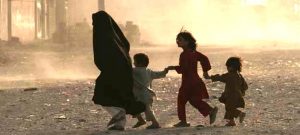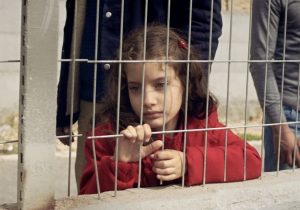[Note: In an interview on Democracy Now, Zaher Wahab makes it clear that current claims that the US needs to stay in Afghanistan to keep women safe ring hollow. Wahab is an Afghan American professor who taught for four decades at Lewis & Clark Graduate School of Education in Portland and for seven years at the American University of Afghanistan in Kabul. He goes back and forth between Afghanistan and the United States. He was interviewed by Amy Goodman on May 10, 2021.]
Amy Goodman: One of the early justifications, Professor, for the invasion of Afghanistan was protecting women and girls from Taliban misogyny. I remember Laura Bush would often come out to talk about this. You’re highly critical of this pretext. What is your message to those who say now, “See, the US has to stay in Afghanistan once again to protect girls”?
Zaher Wahab: …if you look at the statistics in the last 20 years, a lot of women and a lot of children have been killed. But right now there’s no safety or security anywhere. …it’s very interesting to read the United States State Department advisory, which advises Americans to leave Afghanistan but also advises Americans and others not to go to Afghanistan. The advisory lists all kinds of places—schools, universities, clubs, restaurants, mosques, sports events, etc.—these are unsafe all over the country and that people should not go to Afghanistan.

We should also remember that the initial assault on October 7, 2001, by the United States was really a retaliation. It wasn’t a planned action or invasion or occupation… it was simply a reflexive response to the crime of 9/11. So, later, of course, the American government had to have these justifications, and the liberation of—so-called liberation—of women was one of them.
“… the American government had to have these justifications, and the so-called liberation of women was one of them.”
But women and children continue to be the main victims of the occupation and invasion and the mayhem. For example, 85% of the women in the country are still illiterate. Child marriage is very common. Polygamy is very common. Poverty amongst women is very, very common.
Altogether, 70% of the people are poor. So, whether it was the so-called liberation of women or ending the narcotics trade or bringing peace, prosperity and democracy to Afghanistan, all of these were, I think, sort of for television, for the American audience, because the facts on the ground are entirely different.
It’s being asked by observers: What happened to the $135 billion aid package from the United States? And where is the development? Because right now most people—and women, in particular—live in the Middle Ages. They’re poor. They’re widowed. They’re brutalized. A few women, we should point out—a few women in the major cities—are going to school, and some to the universities, and have government jobs and travel.
Most women, like most Afghan people, live in pain and suffering and have since the beginning of the US invasion.

Be First to Comment